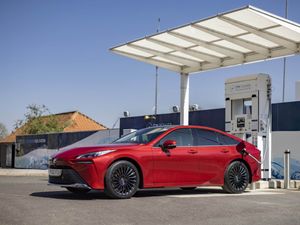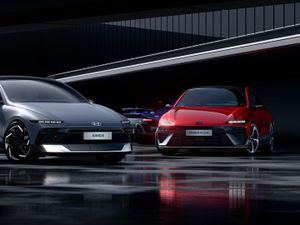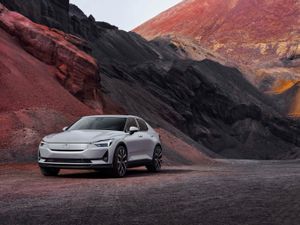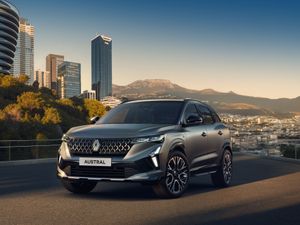What is the current state of hydrogen power for cars in the UK?
We go through the key things you need to know.

With every government and politician in Europe focusing on the future of transportation, hydrogen is one fuel source which is often in the conversation.
While many car makers are transitioning and investing into a one-way street of electric powertrains, some are taking a multiple-solution strategy that could help bring vehicles into a cleaner and brighter future with one big contributor to this goal being hydrogen.
Even though things are looking up for this technology, the UK – among many other countries – is waiting to fully jump into hydrogen-powered cars. But where is the future heading for it?
Here are some of your questions answered.
How many hydrogen filling stations are in the UK?

In September 2023, it was confirmed that there were just 11 hydrogen fuel stations located here in the UK – with only six of them open to the public. Most of them are in the South East of England.
By December 2023, there were 16 stations across the country with a further 16 projects set to open in Britain.
What cars can I buy that run on hydrogen?

In the UK, the new car market only offers two vehicles that run on hydrogen. The first and most well-known is the Toyota Mirai, which starts at £49,995 and rises to £64,200 for more luxurious versions. The Mirai is now in its second generation and is a four-door saloon that aims to be comfortable and refined.
The second car is the Hyundai Nexo, an SUV priced from £65,995 and rising to £69,495.
What investments are being made to make the fuel more accessible?

In December 2023, the UK government announced that 11 new production projects for hydrogen are underway and it will invest around £400 million over the next three years, creating over 700 new jobs across the whole country – with the government backing a £2 billion funding package over the next 15 years.
The goal is to produce green hydrogen through a process called electrolysis and it was confirmed that suppliers will receive a guaranteed price from the government for the clean energy they supply.
However, much of this investment looks to aid the use of hydrogen in cleaner power solutions, rather than directly for hydrogen-powered cars.
What does hydrogen fuel cell have over battery electric technology?

Hydrogen fuel cell technology has several different advantages over battery electric technology.
Firstly, a hydrogen fuel cell requires just refuelling of the hydrogen tank itself which the process is very similar to filling up conventional fuel in an internal-combustion-engined vehicle. It takes just a few minutes to do and it’s a very simple process – whereas with EVs, the charging times are still a lot longer with the quickest still taking around 25 to 30 mins.
The other advantage is that a fuel cell can deliver a greater range of electricity, with the Toyota Mirai getting over 400 miles out of a tank. Electric car ranges are improving but only a handful of models – such as the Mercedes EQS – can achieve over 400 miles between charges.
What’s the difference between green, blue and grey hydrogen?

There are three types of hydrogen, all of which have different energy supplies and functions. The hydrogen produced from these sources can be used in hydrogen vehicles.
The first is green, which is made by using electricity from renewable sources to split water molecules into hydrogen and oxygen – it’s also known as carbon-free.
Blue is during the steam reforming process, a high proportion of carbon generated is captured and stored underground – this is low carbon hydrogen.
Finally, there is grey. It’s generated from natural gas or methane through the steam reforming process causing greenhouse gas emissions which is what most of today’s hydrogen is used for.
Finally, you’ve got grey. At this level, traditional fuels like natural gas or methane are used to create hydrogen – but this creates greenhouse gas emissions in the process.
But, the main focus of governments and companies around the world is to focus on producing green, because all of its processes are used through renewables such as wind and solar, which benefits the production process by lowering the overall CO2 produced to make hydrogen.





